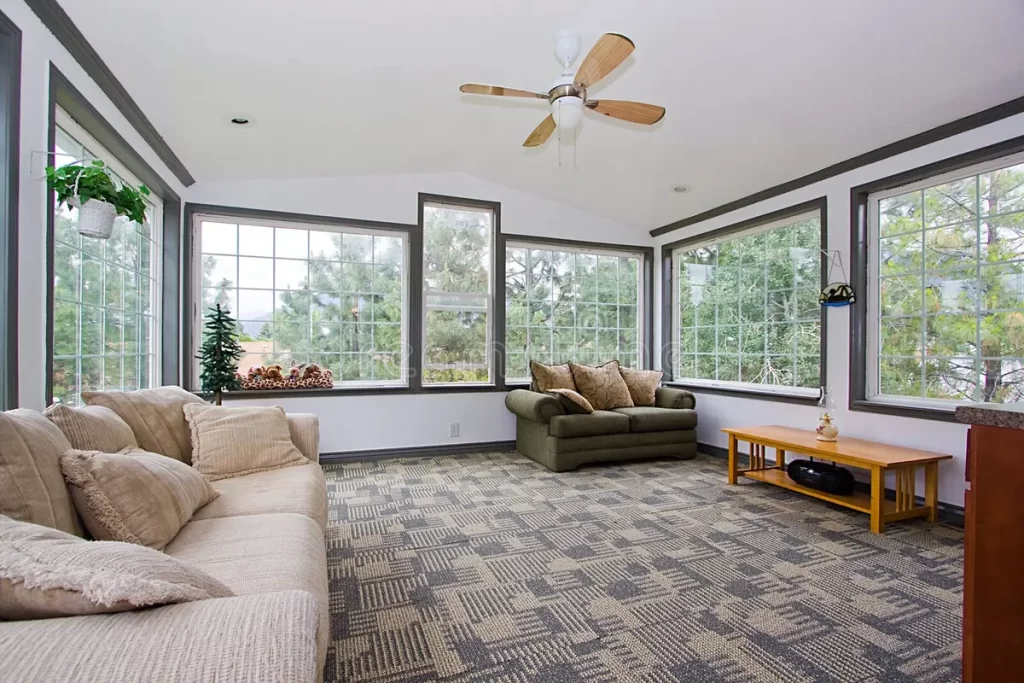
The direction in which a sunroom should face is an important consideration when designing or selecting a location for this space in your home. The orientation of a sunroom determines the amount of sunlight it receives throughout the day and its overall comfort and energy efficiency. In this article, we will explore the various factors to consider when determining the optimal direction for a sunroom.
- Geographic Location: The geographic location of your home plays a significant role in determining the ideal direction for a sunroom. Different regions have varying climatic conditions, such as the angle of the sun, prevailing winds, and temperature variations throughout the year. Understanding the specific characteristics of your location will help guide your decision.
- Solar Exposure: One of the primary goals of a sunroom is to maximize solar exposure and natural light. Generally, south-facing sunrooms receive the most sunlight throughout the day, especially in the Northern Hemisphere. South-facing sunrooms capture the sun’s rays during the morning and afternoon, providing ample natural light and warmth. This orientation is ideal for homeowners seeking a sun-drenched space and passive solar heating benefits.
- Seasonal Considerations: When determining the direction for a sunroom, it’s essential to consider seasonal changes in solar angles. In some regions, the sun’s path shifts significantly between summer and winter. East-facing sunrooms receive abundant morning sunlight, making them ideal for early risers who want to enjoy the sunrise. West-facing sunrooms capture the afternoon and evening sun, providing a warm and cozy space for relaxation.
- Climate Control and Energy Efficiency: While maximizing natural light is desirable, it’s also crucial to consider energy efficiency and climate control in a sunroom. The orientation of the sunroom can affect its temperature and the energy required for heating or cooling. Here are a few guidelines to consider:
- To prevent excessive heat gain in hot climates, consider shading options such as overhangs, awnings, or blinds on the sunroom’s windows. This is particularly important for west-facing sunrooms, as they receive intense afternoon sunlight.
- In colder climates, south-facing sunrooms can take advantage of passive solar heating during the winter. Incorporate proper insulation, energy-efficient windows, and thermal mass materials to store and release heat.
- East-facing sunrooms offer cool mornings and shaded afternoons, making them comfortable in warmer climates. They receive less direct sunlight during the hottest parts of the day.
- North-facing sunrooms receive relatively consistent, indirect light throughout the day. While they may not receive as much direct sunlight, they provide a more evenly lit and consistently comfortable space.
- Views and Aesthetics: Consider the views and aesthetics when determining the direction of a sunroom. If you have a beautiful backyard, garden, or landscape that you want to enjoy from your sunroom, consider orienting it to capture those views. Additionally, the architectural design and layout of your home may influence the direction of the sunroom to ensure visual harmony and integration.
- Structural Considerations: The existing structure of your home may also influence the direction of a sunroom. The available space, orientation of the house, and structural considerations such as rooflines, foundation, and existing windows can impact the placement and orientation of the sunroom.
- Zoning and Permits: Before constructing or adding a sunroom, it’s crucial to consult local building codes, zoning regulations, and permits. These regulations may have specific requirements or restrictions regarding setbacks, distance from property lines, and the orientation of the sunroom.
In conclusion, the optimal direction for a sunroom depends on various factors, including geographic location, solar exposure, seasonal considerations, climate control, energy efficiency, views, aesthetics, and structural constraints. South-facing sunrooms generally maximize solar exposure, while east and west orientations provide morning or afternoon sunlight, respectively. North-facing sunrooms offer more consistent light throughout the day. Consider the specific characteristics of your location, your climate control needs, and your preferences to determine the most suitable direction for your sunroom. Consulting with a professional architect or designer can help ensure that you make an informed decision that aligns with your goals and maximizes the enjoyment of your sunroom space.
